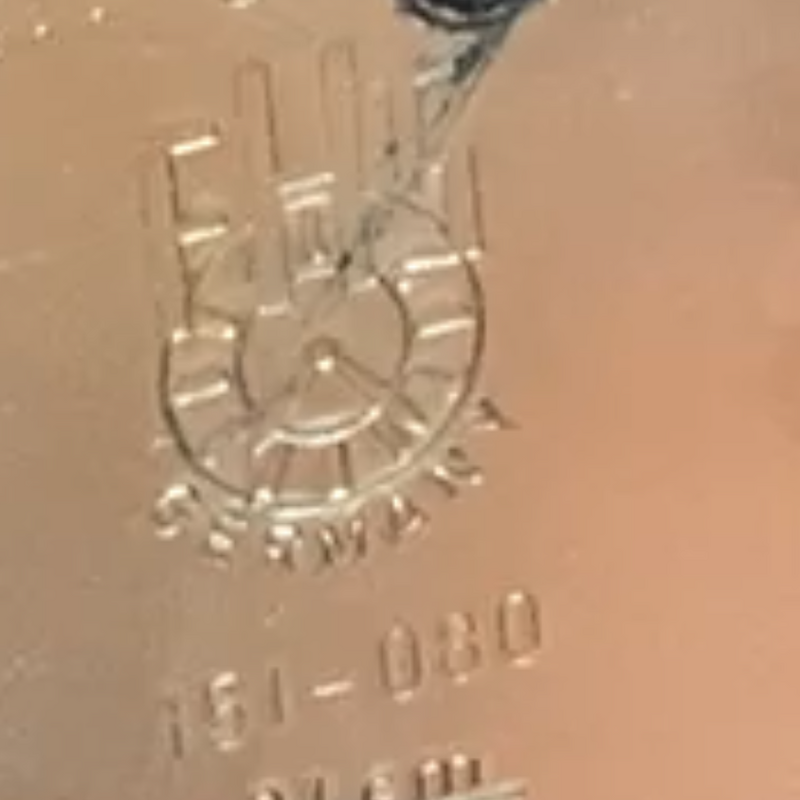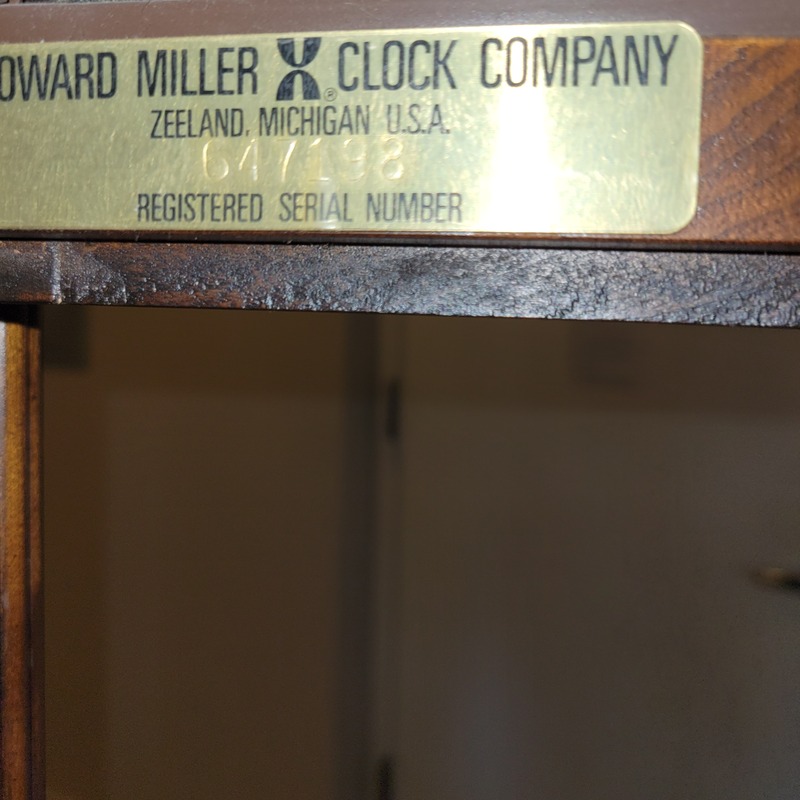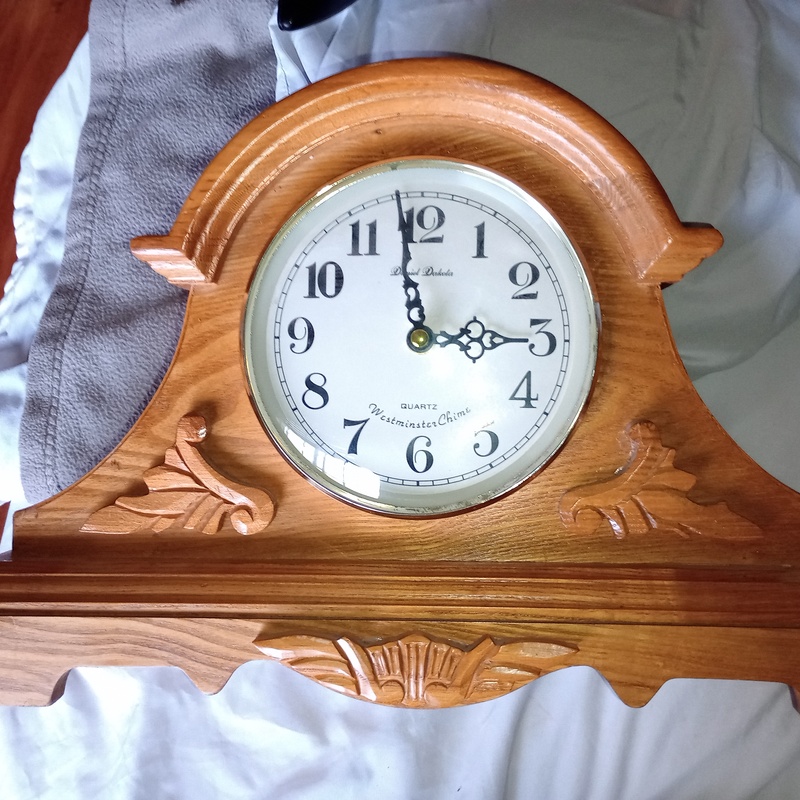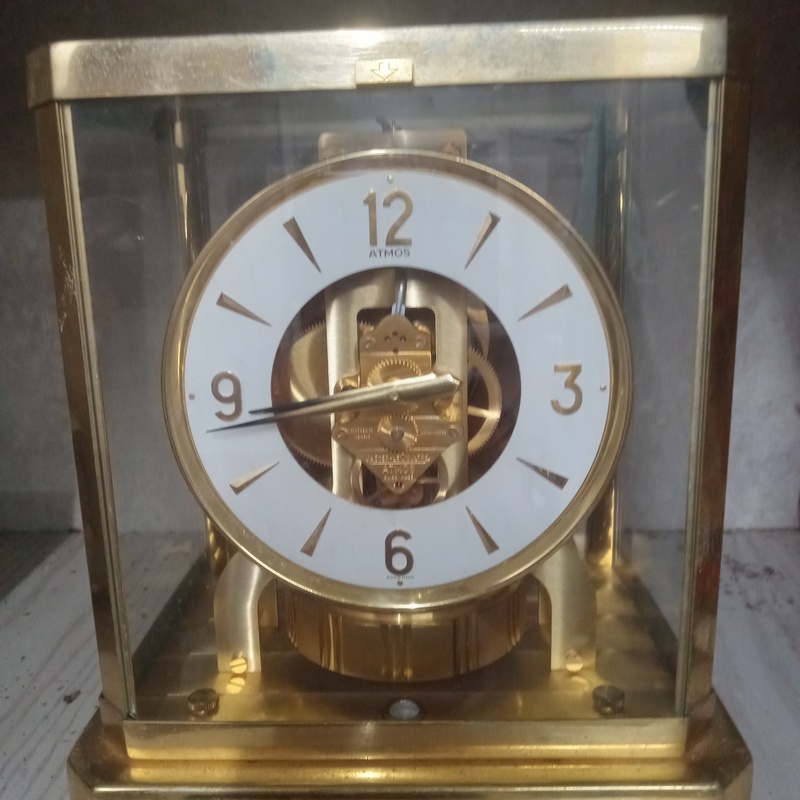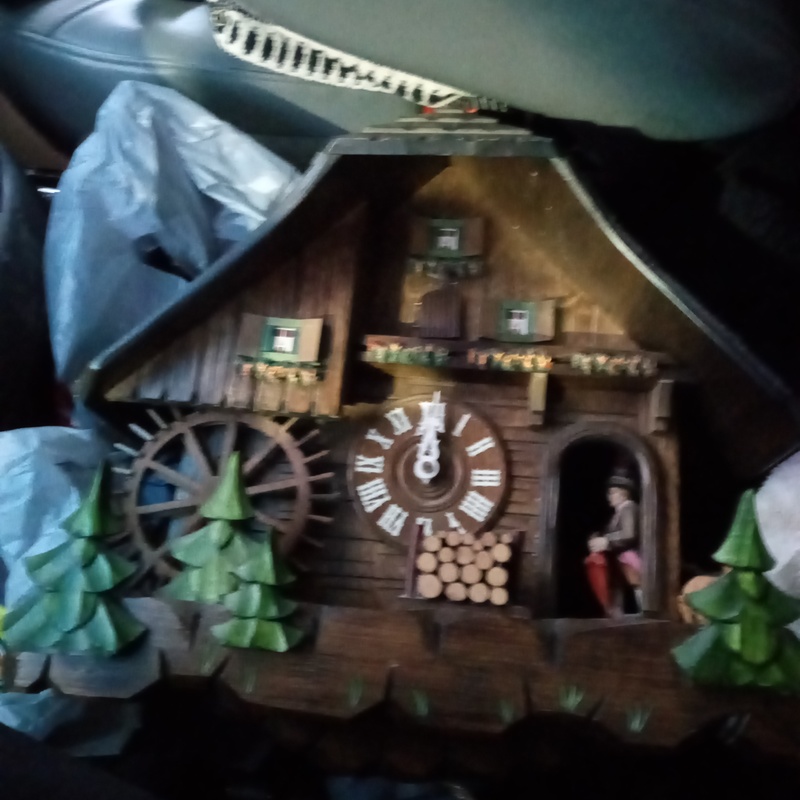





Ornate 17th Century Solid Brass Clock
I am sending you some images of my clock. It was looked at 60 years ago by a clock appraiser who said it was molded in Brazillian sand and was 17th century. It hasn't been looked at since. The original works were missing and someone had adapted an electrical system to it. Later a AA battery mechanism was screwed in. It was passed thru several Grandmothers to eventually my Mother. I cannot find a mark or symbol on the clock. It weighs about 6.5 pounds and is solid brass. Thank you very much for providing your information. Jim Cross
MY Mother 4 generations of Grandmothers
Inherited
Maybe


Hello James,
Thank you for sending in this very unusual clock to mearto.com for an appraisal. I shall try to help you with that today.
TITLE:
Cast brass, originally a single spring driven, wall timepiece, a replication of the German Telleuhr (see History below) wall clock, unsigned and likely of Continental origin, made circa late 19th century-1920’s. With modifications, restructuring and battery powered movement.
DESCRIPTION:
CASE: (Size not provided) Weight is 6.5 pounds. The brass casing is represented in this clock by the dial surround. The dish design is represented by a large brass circle with ornamentation added at the quarters outside of the circular dial surround. The cast brass ornament @12 is represented by a broken arch or swan neck pediment centering a bowl of fruit finial. (The broken arch pediment whether on a clock, barometer or piece of furniture first became known during the early year of Chippendale furniture circa 1760-1770.) Below the finial is a polished medallion surrounded by foliate forms. The decoration @6 contains large brass ‘C’ scrolls (also Chippendale era design). At 3 and 9 there are Chippendale shells and pinwheel scrolls. Inside the brass circle the dial is divided into four general sections by the placements four large ‘C’ scrolls, each encompassing a quarter of the dial surround. Just outside these scrolls are human masks, a Chieftain Head @12 & 6 and Neo-Classical male heads @3 & 9. The use of male heads primarily is typically a Teutonic feature on their clocks going forward through the 18th and 19th centuries. The remainder of the casting reveals a plethora of foliate and floral patterns in bas relief. . . Looking at the back of the case these ornaments placed at the outer quarters are added to the central disc which has a round aperture for the door providing access to the movement compartment. There is a wall hangar just above that opening. (Such clocks were originally suspended on a nail in a wall post by an iron or brass ring at the very top of the clock case, so that the case resided as close to the wall as possible since there was a pendulum arrangement inside and if it was hung an inch away from the wall the pendulum would not function. Therefore, ‘L’-shaped hangar we see on this clock, and it seems original to this case in terms of oxidation and wear, would never have been used.) The screws that I can see most clearly appear to be 20th century. . .
DIAL: Brass beaded bezel surrounds this cast brass dial with its Arabic hours in circular cartouche form (Arabic hours on continental or American clocks did not come into existence much before 1800. Therefore they could not have been found on a 17th or early 18th century clock. The enameled black Arabic numerals are, in addition, stylized {note the bases of the numeral one}, and such versions are seen much later in the 19th century and the Art Deco years of the 20th century.) There is a closed minute ring to the outside and foliate forms separate the hours while the dial center is filled with intertwined foliate gilt designs. The dial is unsigned. (Original dials on such clocks were chased silver and rarely the entire casing was done in such chased silver.) There are winding holes are one and seven, but the original timepiece spring winding aperture is just below the hands above the six. The hands which are shaped out of brass are very interesting and the latest part of the clock (aside from the current movement). These are Art Deco era hands called, “Scotties” (early examples of such clocks had a single hand). . .
MOVEMENT: Original early movements usually had crown wheel escapement (verge) with chain driven fusee springs. Today we have a battery driven timepiece movement. The movement is a major piece of a clock, along with the dial and the case. When the three major sections are NOT together it severely impacts value.
COMMENTARY/HISTORY:
It is most important to establish some understanding of what we have here (at least in my own opinion). Previously looked at by an appraiser who said, “It was molded in Brazilian sand and was 17th century”. Here, I have to agree that this was a cast brass object in the same way that spandrels on a clock dial are cast in sand. Brazilian sand, I am not so sure about. It is most certainly NOT 17th century. This ‘clock’ takes the Germanic form of a 17th century ‘Telleuhr’ wall or post hung timepiece. The 17th century telleuhr or “dish clock” follows the form of pewter dishes in the Teutonic areas of Europe at that early time. Initially these clocks were simple timepieces, some actually had a short ‘cowtail’ pendulum which swung in front of the dial. These were timepieces that did not strike. The early movements were contained in a case of thin sheet iron. The dish or façade of the case was made of iron covered with brass or copper decoration in bas relief. Later the Germans made examples for standing on a table using small feet at the back and still later they departed from using the true dish style. Later still, in the mid-18th century, these clocks became known as Zapplers and were made in wall and mantel varieties including a gravity version where the clock case slowly descended a saw tooth brass post driven by its own weight.
These clocks were made for the bourgeoisie and primarily made in southern Germany and Austria, but were rarely seen outside of this region. The style was not popular in other countries.
One other thought struck me immediately about this clock. When the Middle Eastern countries opened themselves to a mostly European tourist trade during the late 19th century (c. 1880s), these Arab countries had bazaars that sold metal items to these tourists. Over the years I have seen items that resemble this clock, but not limited to timepieces, such as a replica of a neo-renaissance astrolabe or early brass globes with engravings of the heavens with the stars and the sun rotating around the earth, as though they predate Copernicus (1543). Quite a bit of these brass replications I still think of as bizarre bazaar items. I will say that they do have some age today in that they are a bit over a century old, for the most part.
PRICING: I cannot supply you with a list of comparables for such an item, but can only provide you with an estimate of value from my own experience in doing this for the past dozen or so years, and having seen such circa 1900 items. One has to take into account the damage done by placing a second movement into this case and then changing it once again to a battery operated mechanism. It does remain and interesting conversation piece.
I believe that if you were to auction this clock it would bring in the range of $80-$120 in today’s clock market, a market that is very demanding of genuine items and total originality, including condition.
Thank you again for sending this horological item into mearto.com for an appraisal. I hope you find this information informative and interesting, despite the pricing aspect.
My best,
David

